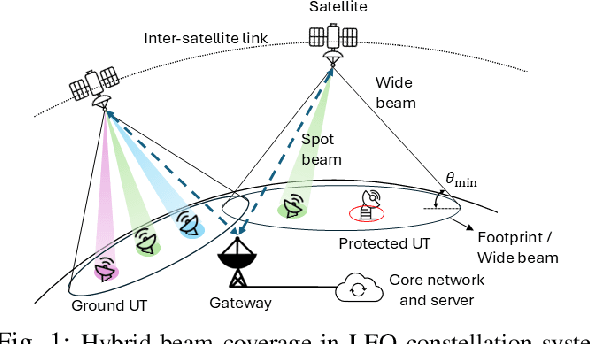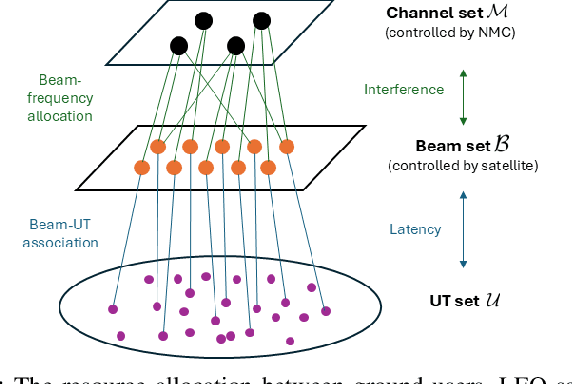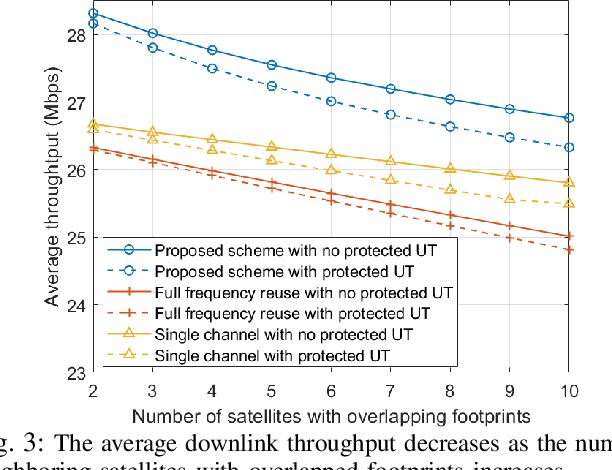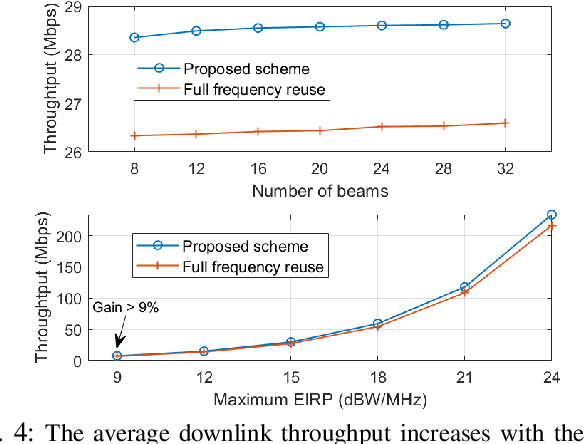Minchae Jung
Latency Optimization in LEO Satellite Communications with Hybrid Beam Pattern and Interference Control
Nov 14, 2024



Abstract:The rapid advancement of low Earth orbit (LEO) satellite communication systems has significantly enhanced global connectivity, offering high-capacity, low-latency services crucial for next-generation applications. However, the dense configuration of LEO constellations poses challenges in resource allocation optimization and interference management, complicating coexistence with other communication systems. To address these limitations, this paper proposes a novel framework for optimizing the beam scheduling and resource allocation in multi-beam LEO systems. To satisfy the uneven terrestrial traffic demand, a hybrid beam pattern is employed to enhance the downlink quality of service and minimize the transmission latency from LEO satellites to ground user terminals. Additionally, a dynamic co-channel interference (CCI) control mechanism is developed to mitigate inter-beam interference within the LEO constellation and limit cross-system interference affecting protected users from other networks. The problem of user-beam-frequency allocation with power optimization is formulated as a mixed-integer dynamic programming model and solved using a low-complexity neural network-based graph generation algorithm. Simulation results show that the proposed approach outperforms the baseline methods of full frequency reuse and single-channel transmission, and highlights the potential for further performance improvement with multi-user transmissions.
 Add to Chrome
Add to Chrome Add to Firefox
Add to Firefox Add to Edge
Add to Edge